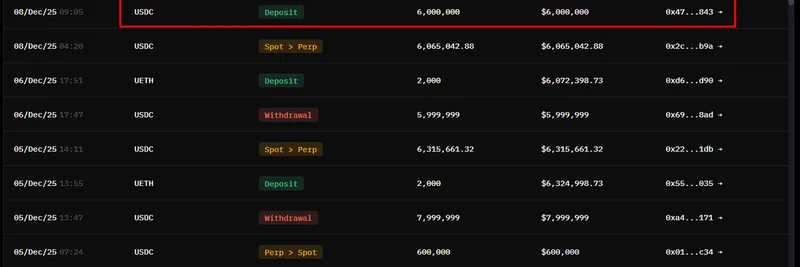Hey there, crypto enthusiasts! If you're keeping an eye on innovative blockchain projects, you might have caught the recent buzz from BSCNews on X. They posted a deep dive into Interlink Labs' 2025 whitepaper update, spotlighting what they call a "game-changing dual-token system" featuring $ITL and $ITLG. This isn't just another token launch—it's a thoughtful approach to making blockchain accessible to the masses, especially the unbanked. Let's unpack this in plain English, step by step.
What is Interlink Labs All About?
Interlink Labs is on a mission to build the world's largest human network on blockchain, aiming to connect over 1 billion real people. Think of it as a decentralized platform where identity verification meets crypto utility. Unlike traditional wallets that are anonymous and prone to bots or duplicate accounts (known as sybil attacks), Interlink uses face scanning and liveness detection to confirm you're a unique, real human. This creates a trust layer for apps, games, and financial services, all without sharing your personal data.
The project emphasizes bringing the unbanked—those without access to traditional banking—onto the chain. With just a smartphone, anyone can verify their identity and start participating in the ecosystem, earning tokens and engaging in Web3 activities. It's human-centric, meaning it puts real people at the core, not just code or capital.
The Dual-Token Economy: $ITL and $ITLG
At the heart of the update is Interlink's dual-token model, designed for stability, utility, and long-term growth. Dual-token systems aren't new in crypto, but Interlink's twist focuses on separating "credibility and stability" from "activity and governance." This helps prevent inflation, ensures fair distribution, and rewards genuine participation.
Breaking Down $ITL: The Utility Token
$ITL is the workhorse of the ecosystem, serving as the utility token with a fixed total supply of 10 billion tokens. This capped supply helps maintain value by avoiding endless minting. Here's how it's allocated (based on the whitepaper insights shared in the BSCNews video):
| Allocation Category | Percentage | Description |
|---|---|---|
| Human Nodes | 80% | Rewarded to verified users who contribute to the network through mining and activities. |
| Foundation | 20% | Reserved for ecosystem development, partnerships, and operational needs. |
$ITL represents credibility in the network. Developers and partners must hold $ITL to integrate with the verified human layer, enabling features like secure apps in social, gaming, AI, and finance. It's also partially distributed to $ITLG holders to promote long-term holding and ecosystem stability. In simple terms, $ITL is your ticket to accessing and building on the platform's core infrastructure.
Understanding $ITLG: The Governance Token
On the flip side, $ITLG is the governance token with a smaller supply of 100 million tokens. This one is all about activity, decision-making, and rewarding engagement. Its allocation mirrors $ITL somewhat:
| Allocation Category | Percentage | Description |
|---|---|---|
| Human Nodes | 80% | Earned by active participants in governance and network tasks. |
| Foundation | 20% | Used for strategic initiatives and community incentives. |
$ITLG flows through the ecosystem's activities—think voting on proposals, accessing launchpads, or earning rewards from mining. It plays a key role in decentralized governance, where holders can influence the project's direction. Plus, holding $ITLG allows you to earn ongoing rewards, even as a latecomer, thanks to a dynamic mechanism that adjusts for fairness.
How Mining Works: Human-Powered and Sustainable
One of the coolest parts? Interlink's mining isn't about energy-guzzling hardware; it's human-powered. Once verified as a real person via the app's face scan, you become a "Human Node." You earn tokens by contributing to network integrity—things like validating transactions, participating in events, or simply staying active.
The system is built for sustainability:
- Early adopters get a head start, but late joiners aren't left out, thanks to adjustable rewards.
- It uses a "grow just day bounding system" to balance supply and demand, preventing oversupply.
- This model reflects the protocol's human-centric ethos, where real-world participation drives value.
This approach could fit into regulatory frameworks, as $ITL might align with securities-like stability, while $ITLG handles community-facing utilities.
Bridging the Unbanked to Onchain
More than 1.4 billion adults worldwide remain unbanked, and Interlink aims to change that. By requiring only a smartphone for verification, the project lowers barriers to entry. Imagine downloading the Interlink App, scanning your face, and instantly mining tokens or accessing mini-apps for finance or gaming—all onchain.
The ecosystem includes tools like the Mini-App Development Kit (MDK) for builders and a Developer Portal, making it easy to create verified, trust-based dApps. This could revolutionize sectors like education, health, and finance, where tech companies use $ITLG for value creation instead of extraction.
Looking Ahead: Potential and Challenges
BSCNews' video wraps up by noting that while dual-token systems can be complex, Interlink's design separates stability from activity effectively. The project has already launched its whitepaper at whitepaper.interlinklabs.ai, with more updates coming.
Of course, as with any crypto project, keep an eye on vesting schedules, buybacks, and governance to spot any risks. But if Interlink hits its 1 billion user goal, it could be a massive step toward global blockchain adoption.
What do you think—ready to verify and mine some $ITL? Check out the full BSCNews tweet here and dive into the whitepaper for more details. Stay tuned for updates on meme-insider.com!

